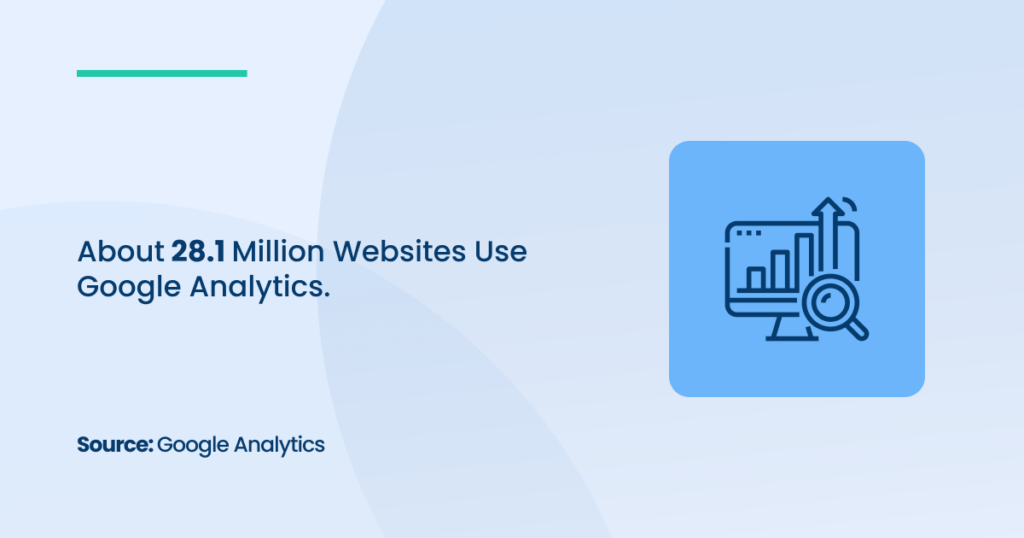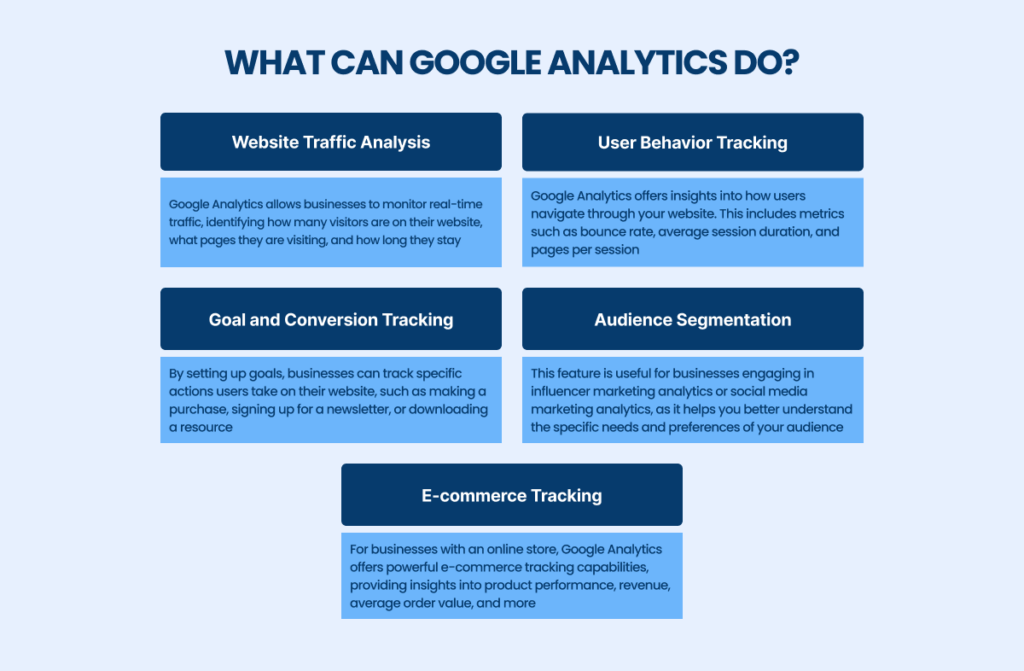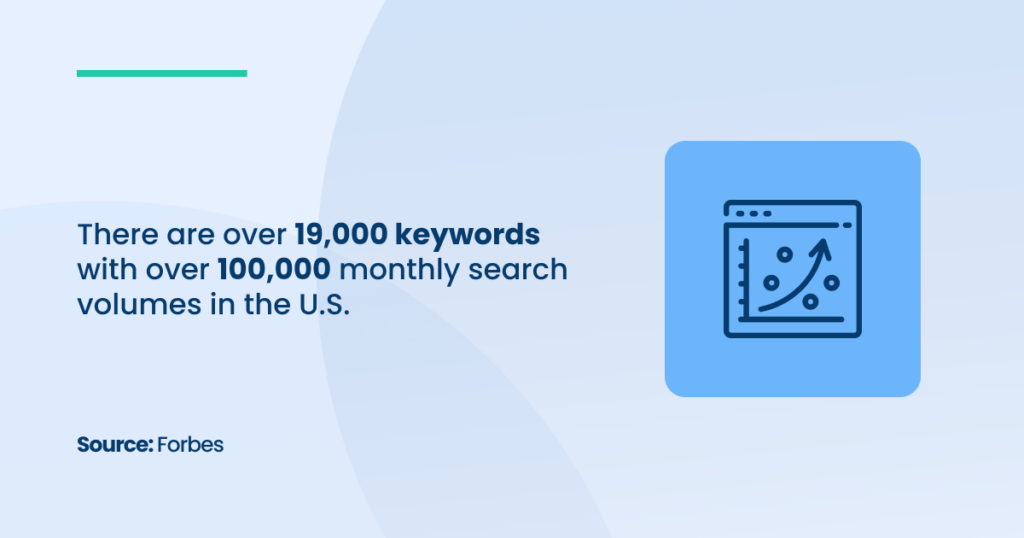Imagine your website as a marketplace.
Customers are browsing, exploring, and hopefully making purchases. But how do you know if your digital marketplace is successful?
That’s where web marketing analytics comes in.
Marketing Analytics Market size was valued at USD 5.3 billion in 2023 and is anticipated to register a CAGR of over 16% between 2024 and 2032.
Source: Marketing Analytics Market Size Research
The rising demand for marketing driven by data is greatly accelerating market growth. Companies rely more on data to gain insights into customer behavior, preferences, and market trends.
Within the processes, a quality Marketing Analytics & Reporting Agency will expand the portfolios by forming strategic partnerships with major industry players.
The blog post will cover Web Marketing Analytics and the role of data in modern marketing.
What is Web Marketing Analytics?
Web marketing analytics is collecting, measuring, analyzing, and interpreting data related to online marketing activities.
This data helps businesses understand how their digital marketing strategies perform, providing actionable insights to optimize their efforts.
Web marketing analytics focuses on monitoring various key performance indicators (KPIs), such as website traffic, conversions, user engagement, and more.
Source: Market share of leading marketing analytics technologies worldwide in 2023, Statista
Businesses can make informed decisions that drive growth and improve customer experiences by utilizing web marketing analytics.
At its core, web marketing analytics involves leveraging tools and technologies, such as Google Analytics, to track marketing campaigns and evaluate their effectiveness.
Through these tools, businesses can track website traffic, monitor how users interact with content, and determine which strategies are working.
Whether through email marketing, SEO, or paid ads, businesses can use marketing analytics solutions to gain valuable insights into consumer behavior, allowing them to refine their approach for better results.
The Role of Data in Modern Marketing
In today’s digital landscape, data is the foundation of all successful marketing efforts. Data analytics in business has become essential as companies increasingly rely on detailed data to drive decision-making.
- Web marketing analytics helps businesses collect and interpret data to improve their marketing strategies.
- Analytics in web marketing enables tracking of marketing campaigns and their effectiveness through key performance indicators (KPIs).
- Data analytics in business provides valuable insights into customer behavior, helping companies tailor their marketing efforts.
- Marketing campaign metrics such as conversion rates, bounce rates, and engagement offer actionable insights for optimizing performance.
- AI marketing analytics enhances data processing, predicting trends, and offering personalized marketing recommendations.
Setting Up Your Web Analytics Tools
In today’s digital marketing landscape, data is key to understanding customer behavior and optimizing your marketing efforts.
Setting up the right web analytics tools is essential for tracking your online performance and gaining valuable insights from your customer data.
Whether you’re running social media campaigns, influencer marketing initiatives, or mobile marketing strategies, having the right tools allows you to measure success and refine your approach.
Choosing the Right Analytics Tools
Selecting the right analytics tools for your business is crucial for effectively tracking and interpreting the data behind your marketing campaigns.
Different tools serve different purposes, depending on the type of data you need to track, the channels you’re using, and the complexity of your business.
To make an informed decision, consider the following aspects when choosing your analytics tools:
- Business Goals and Key Metrics: The first step is understanding your goals and identifying the key metrics you need to measure. For instance, if your objective is to track website traffic and conversions, Google Analytics is a powerful tool. However, if you’re focused on social media or mobile marketing analytics, you might need tools that specialize in these areas, like Hootsuite or Mixpanel.
- Integration with Other Tools: Ensure that the tool you choose integrates seamlessly with your other marketing platforms. For instance, Google Analytics works well with Google Ads, while other platforms like HubSpot integrate with email marketing, CRM systems, and SEO marketing analytics tools.
- Customizability: Different businesses have different needs when it comes to tracking and reporting. Choose an analytics tool that allows you to customize reports based on your unique marketing campaign metrics. For instance, AI marketing analytics tools can help automate the customization process, providing tailored reports based on your goals.
- Ease of Use: The tool should be easy to navigate, even for teams that aren’t experts in data analytics in business. Many platforms offer dashboards that give an at-a-glance overview of performance, which is particularly helpful for smaller businesses or marketing teams without extensive data expertise.
- Support and Consulting Services: Some tools come with built-in marketing analytics consulting services, offering expert advice to help you interpret your data. These services can be invaluable for understanding complex marketing analytics trends and applying insights effectively.
Google Analytics Overview
Google Analytics is one of the most widely used tools in the world of web marketing analytics, providing businesses with detailed insights into their website performance, user behavior, and overall digital marketing efforts.
From tracking website traffic to measuring marketing campaign metrics, this tool is a cornerstone for businesses looking to leverage data for improved decision-making.

What Can Google Analytics Do?
Google Analytics offers a range of features designed to track and analyze customer interactions across your website.

Why Use Google Analytics?
Using Google Analytics as part of your marketing analytics services offers several advantages:
- Actionable Insights: Google Analytics provides valuable insights into customer behavior, allowing businesses to make informed decisions.
Whether it’s optimizing web pages, improving product listings, or fine-tuning marketing messages, data from Google Analytics can significantly enhance your marketing performance. - Real-Time Tracking: Real-time data allows businesses to monitor campaign performance as it happens, enabling them to adjust their strategies on the fly. For instance, if you see a spike in website traffic after launching a campaign, you can quickly assess its impact.
- Scalability: Google Analytics is scalable, making it suitable for businesses of all sizes—from small startups to large enterprises. Whether you need basic reports or advanced analysis, this tool grows with your business.
- Cost-Effective: As a free tool, Google Analytics offers immense value, especially for businesses that want comprehensive analytics without the hefty price tag of some paid marketing analytics solutions.
Understanding Key Metrics and KPIs
To leverage analytics in web marketing effectively, it’s crucial to understand the key metrics and key performance indicators (KPIs) that drive decision-making.
By monitoring and analyzing these metrics, businesses can gain valuable insights into how their digital strategies are performing and where improvements can be made.
Whether you’re tracking social media marketing analytics, SEO marketing analytics, or influencer marketing analytics, KPIs offer a data-driven way to measure the success of your efforts.
Traffic Metrics
Traffic metrics are the foundation of web marketing analytics. They provide insights into how users are finding and interacting with your website.
Understanding these metrics can help you gauge the effectiveness of your marketing campaigns, content strategy, and user acquisition efforts.
Pageviews, Sessions, and Unique Visitors
- Pageviews: A pageview is recorded every time a user visits a page on your website. This metric is an essential indicator of content performance, showing how often your content is being viewed.
If your pageviews are high, but your conversions are low, it may indicate a need to improve the user experience or optimize the content.
- Sessions: A session refers to a group of interactions a user takes on your site within a specific time frame (usually 30 minutes). One session can include multiple pageviews, interactions, and conversions.
Sessions are critical for understanding user behavior and the journey through your website. They provide insights into how engaged visitors are and how long they spend on your site.
- Unique Visitors: This metric counts the individual users who visit your site within a specified period. Unlike pageviews, which count every visit, unique visitors track only the first visit of a user during that time.
High unique visitor numbers indicate that your marketing strategies are bringing new visitors to your site.
These traffic metrics are fundamental to data-driven marketing, providing insights into the success of SEO marketing analytics, paid ads, and other acquisition strategies.
Tools like Google Analytics and other marketing analytics solutions provide detailed breakdowns of these metrics, helping businesses track marketing data insights for better performance.
Bounce Rate and Time on Page
- Bounce Rate: The bounce rate refers to the percentage of visitors who leave your website after viewing only one page. A high bounce rate can indicate that users aren’t finding what they are looking for or that the page isn’t engaging enough to encourage further exploration.
Monitoring the bounce rate is critical for both mobile marketing analytics and SEO marketing analytics, as a high rate can negatively impact search engine rankings and overall site performance.
- Time on Page: This metric shows the average amount of time users spend on a specific page. A longer time on page suggests that users find the content valuable and engaging.
On the other hand, a short time on page could indicate a need for better content optimization or a more compelling user experience. It’s essential to track this metric across both desktop and mobile devices, as user behavior can vary across platforms.
By closely analyzing bounce rates and time on page, businesses can improve their analytics in web marketing efforts by focusing on user experience, page load times, and content relevance.
Conversion Metrics
While traffic metrics are essential for understanding how visitors are arriving at your site, conversion metrics provide insights into how well your website is turning visitors into customers.
Conversion metrics are key to evaluating the effectiveness of your marketing campaigns and ensuring that your marketing dollars are generating returns.
Conversion Rate
The conversion rate is one of the most critical marketing campaign metrics for any business. It measures the percentage of website visitors who complete a desired action, such as making a purchase, signing up for a newsletter, or filling out a form.
Source: Invespcro
A high conversion rate indicates that your website is effectively guiding users through the customer journey.
Conversion rates are influenced by multiple factors, including website design, user experience, and the clarity of your call to action.
Average Order Value (AOV)
The average order value (AOV) is the average amount of money spent each time a customer completes a transaction on your website.
This metric is especially important for e-commerce businesses, as it helps evaluate the overall profitability of your marketing efforts.
Tracking AOV alongside conversion rates provides a more complete picture of how effective your site is at driving revenue. For example, an increase in traffic might not lead to an increase in AOV, suggesting that while more people are visiting the site, they may not be purchasing as much.
Engagement Metrics
Engagement metrics measure how users interact with your website and content. These metrics are particularly useful for evaluating the quality of your content and understanding what keeps users on your site.
High engagement indicates that your marketing data is resonating with users and that your data-driven marketing strategies are working effectively.
Scroll Depth
Scroll depth tracks how far down a page users scroll before leaving. This metric is particularly important for long-form content, blog posts, and landing pages. A high scroll depth indicates that users are engaged with your content and are reading through the entire page.
Low scroll depth, on the other hand, suggests that users may not be finding the content relevant or compelling enough to continue reading. Monitoring scroll depth is especially useful in influencer marketing analytics, where content quality and audience engagement are key indicators of success.
To improve scroll depth, businesses can experiment with A/B testing for content layouts, headlines, and visuals.
Platforms like Google Analytics and other web marketing analytics tools offer scroll depth tracking, which can provide insights into how to improve content structure and user experience.
Exit Pages and Heatmaps
- Exit Pages: An exit page is the last page a user views before leaving your website. Tracking exit pages is essential for identifying areas where the user experience may be falling short.
If a particular page consistently appears as the exit page, it might indicate that users are hitting a roadblock, such as poor navigation, irrelevant content, or a lack of clear CTAs.
Tracking exit pages is valuable for improving conversion metrics and reducing cart abandonment rates for e-commerce sites. By optimizing high-exit pages, businesses can enhance the overall user journey and increase retention.
- Heatmaps: Heatmaps provide a visual representation of how users interact with a webpage. They show where users click, scroll, and hover their mouse, allowing businesses to see which elements of the page are most engaging.
Heatmaps are incredibly useful for mobile marketing analytics, as they can reveal differences in user behavior across devices.
For instance, if a heatmap shows that users rarely click on a specific call-to-action button, it could be a sign that the button needs to be more prominent or compelling. Similarly, heatmaps can help optimize page layouts for better user engagement and higher conversion rates.
Many businesses use AI marketing analytics tools that incorporate heatmap functionality to get granular insights into user interactions.
This allows for more data-driven decision-making when optimizing websites, landing pages, and content.
How to Apply Web Marketing Analytics
Using web marketing analytics effectively allows businesses to turn marketing data insights into actionable strategies.
Whether it’s improving SEO, optimizing paid campaigns, or refining content strategies, analytics in web marketing can help boost performance across multiple marketing channels.
By leveraging insights from web analytics data, businesses can make data-driven decisions that enhance visibility, engagement, and conversions.
Improving Your SEO with Analytics
Search engine optimization (SEO) is a critical component of any digital marketing strategy.
SEO marketing analytics can help businesses identify high-performing content, optimize for relevant keywords, and uncover gaps in their SEO efforts. With web marketing analytics, businesses can track how well their pages are ranking, which keywords drive traffic, and how users engage with SEO content.
Identifying High-Performing Pages
A key advantage of using seo marketing analytics is identifying which pages on your website are performing the best in terms of organic traffic, engagement, and conversions.
High-performing pages often drive the bulk of traffic and can offer insights into what’s working well for your audience.
By analyzing web analytics data, such as page views, time on page, and conversion rates, businesses can pinpoint their top-performing pages.
For example, if certain pages have high engagement rates but lower conversions, it may be a signal to adjust the call-to-action (CTA) or optimize for a better user experience. On the other hand, pages with high bounce rates may need improvement in content relevance or loading speed. These insights help guide decisions on content updates, internal linking strategies, and SEO optimizations.
Tracking the performance of landing pages, blog posts, and product pages ensures that your most valuable content continues to attract and retain visitors.
A comprehensive web analytics platform will provide the tools to analyze marketing data insights and implement improvements to boost organic traffic.
Keyword and Content Gap Analysis
To improve your SEO strategy, it’s essential to regularly conduct keyword and content gap analysis. This process identifies opportunities where your site is not ranking for relevant keywords or where your competitors have content that you lack.

Using SEO marketing analytics, businesses can find which keywords are driving traffic and which ones have potential for future optimization.
Keyword gap analysis allows you to compare your current keyword rankings with your competitors’. By identifying keywords where competitors are ranking higher, businesses can focus on optimizing existing content or creating new content to target those gaps.
Optimizing Paid Campaigns with Analytics
Paid campaigns, such as Pay-Per-Click (PPC) ads and social media advertisements, are essential for businesses looking to increase visibility quickly.
However, to ensure a strong return on investment (ROI), it’s crucial to track performance and optimize campaigns based on marketing data insights.
Web marketing analytics offers a wealth of information on how paid ads perform across marketing channels, helping businesses adjust their strategies for maximum impact.
A/B Testing and Ad Performance Metrics
A/B testing is one of the most effective ways to optimize paid campaigns using web marketing analytics.
By testing different versions of ads, landing pages, or CTAs, businesses can determine which variations perform better and generate higher conversions.
Source: Tech report
A/B testing helps to optimize everything from ad copy to visuals, ensuring that your campaigns resonate with your target audience.
Using web marketing analytics, businesses can track key ad performance metrics such as click-through rates (CTR), conversion rates, and cost-per-click (CPC) for each version of the ad being tested. This allows marketers to quickly identify the winning version and scale the campaign for better results.
For example, if one version of an ad has a significantly higher CTR than another, but lower conversions, it may indicate that the landing page needs optimization rather than the ad itself.
A/B testing provides marketing data insights that help businesses refine both their ads and landing pages simultaneously, maximizing overall campaign performance.
Advanced marketing analytics solutions that include AI marketing analytics can even automate some aspects of A/B testing, identifying patterns in user behavior and predicting which variations are likely to succeed based on historical data.
Partner with [A] Growth Agency for Your Marketing Analytics & Reporting Strategies
Web analytics is more than just a tool. It’s a strategic asset for businesses of all sizes.
[A] Growth Agency will harness the insights from data and help to make data-driven decisions.
Our experienced team believes in the power of data to inform and drive every strategy, ensuring our actions are as effective as they are innovative.
We value open communication and teamwork, both within our team and with our partners. We believe that the best ideas are born from collaboration.
We continuously strive to blend data-driven strategies with cutting-edge technology.
Together, with our clients and partners, we are committed to achieving measurable success and driving meaningful impact.
Remember, Excellence Is our Standart.
Don’t hesitate.

